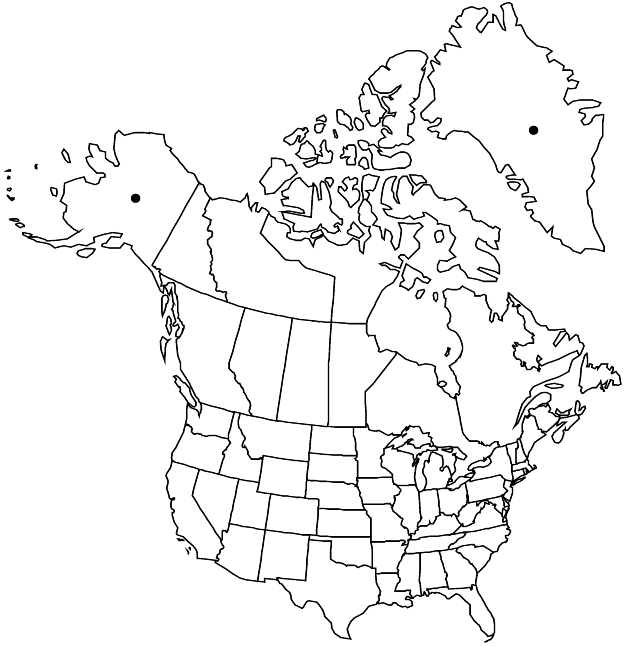Rumex graminifolius
Trans. Linn. Soc. London 10: 264, plate 10. 1811.
Plants perennial, glabrous, with creeping rhizomes and elongated underground stolons. Stems erect or ascending, rarely almost prostrate, branched at base and in distal 1/2 (in inflorescence), 7–30 (–40) cm; shoots not crowded, ± elongated. Leaves: ocrea whitish or silvery, membranous; blade normally narrowly linear, or occasionally linear-lanceolate, usually not hastate, rarely some with indistinct basal lobes, 3–10 × 0.1–0.2 (–0.4) cm, base narrowly cuneate, margins entire, flat or occasionally slightly revolute, apex acute or obtuse. Inflorescences terminal, occupying distal 2/3 of stem, usually lax and interrupted to top, paniculate, with branches often reflexed. Pedicels 1–4 mm. Flowers (3–) 4–6 (–8) in whorls; inner tepals distinctly enlarged, normally 2–2.6 × 1.5–2 (–2.2) mm (free wing 0.3–0.5 mm wide), base cuneate, apex obtuse or subacute. Achenes brown or yellowish-brown, 1.5–2 × 1–1.5 mm. 2n = 56.
Phenology: Flowering late spring–summer.
Habitat: Sandy and gravelly shores and slopes
Elevation: 0-400 m
Distribution

Greenland, Alaska, n Eurasia
Discussion
Records of Rumex graminifolius from Alaska in most cases refer to R. beringensis and R. krausei. The occurrence of typical R. graminifolius in northwestern North America remains uncertain. Some literature records of R. acetosella from northeastern North America (Greenland, Labrador, Newfoundland) may refer to R. graminifolius or R. acetosella subsp. arenicola. Rumex graminifolius was reported from Newfoundland also by M. L. Fernald (1950), but that record requires confirmation.
Some plants from northeastern Eurasia (northeastern Russian Far East and northern Siberia) are known in Russian literature as Rumex aureostigmaticus Komarov [Acetosella aureostigmatica (Komarov) Tzvelev], R. acetosella var. subspathulatus Trautvetter, or R. graminifolius var. subspathulatus (Trautvetter) Tolmatchew (see A. I. Tolmachew 1966; N. N. Tzvelev 1989b). They differ from R. graminifolius in having narrower inner tepals and wider spatulate leaves, usually without basal lobes. I have seen only one North American collection approaching this entity. Some specimens (mostly immature or staminate plants) from western Alaska differ from both R. graminifolius and R. beringensis in their habit; they need additional study. Some chromosome counts different from the most typical number (2n = 56) that have been reported for R. graminifolius in the broad sense from northeastern Russian Far East by several Russian authors (see references in Tzvelev) most probably also refer to R. aureostigmaticus. It is also possible that arctic and subarctic plants identified by various authors as R. aureostigmaticus, R. acetosella var. subspathulatus, R. graminifolius var. subspathulatus, and R. acetosella subsp. arenicola belong to one polymorphic complex of plants intermediate between R. acetosella and R. graminifolius.
Selected References
None.
Lower Taxa
"/2" is not declared as a valid unit of measurement for this property.